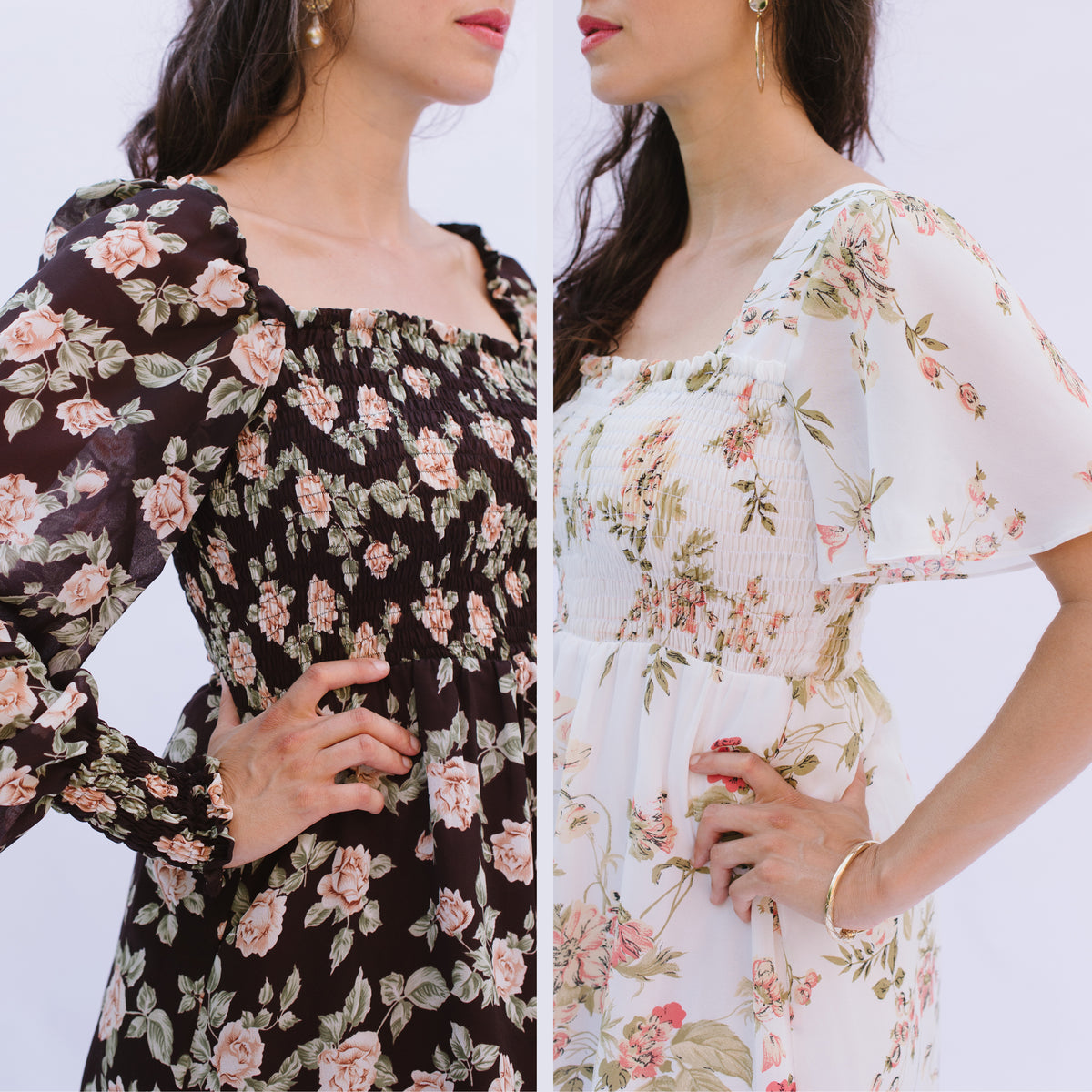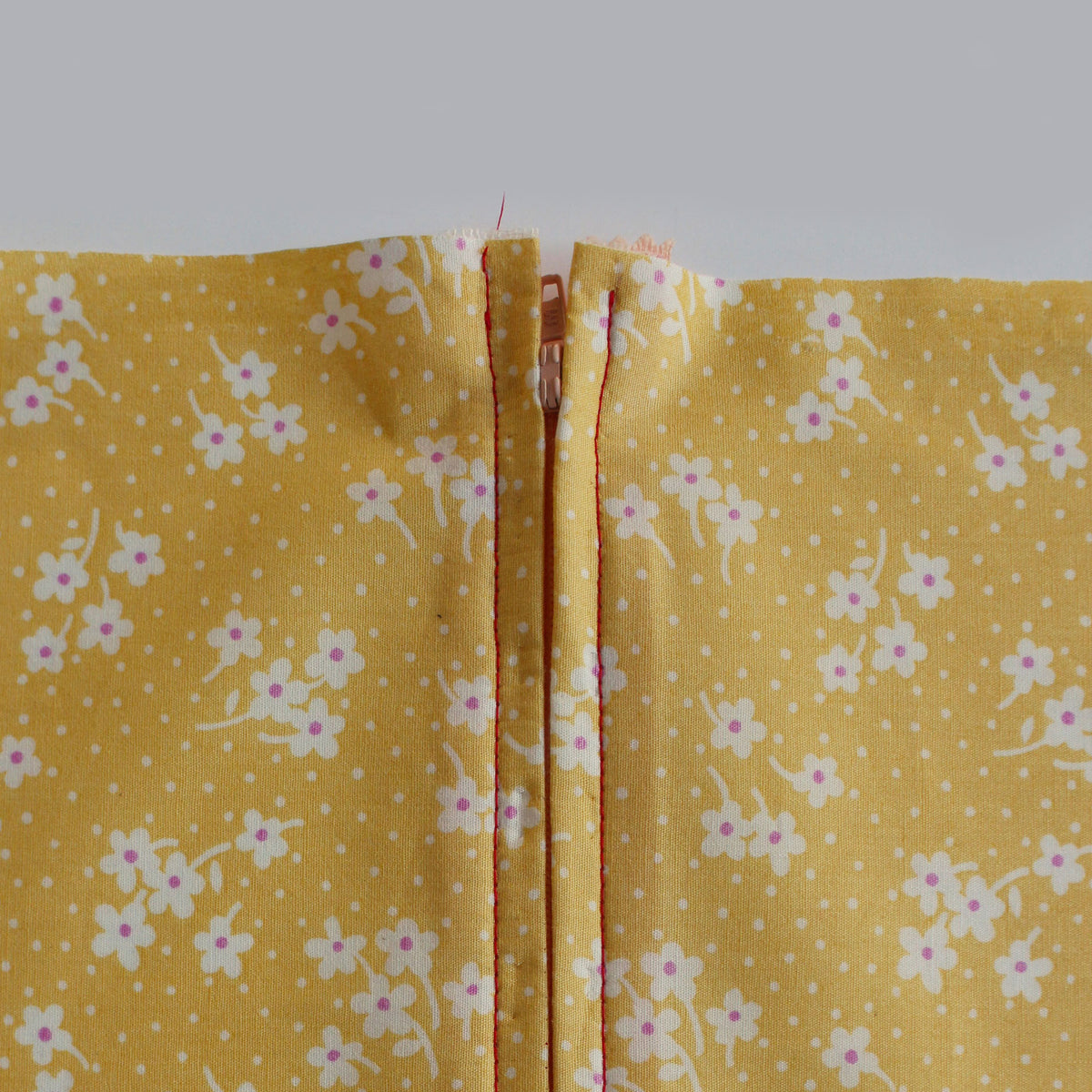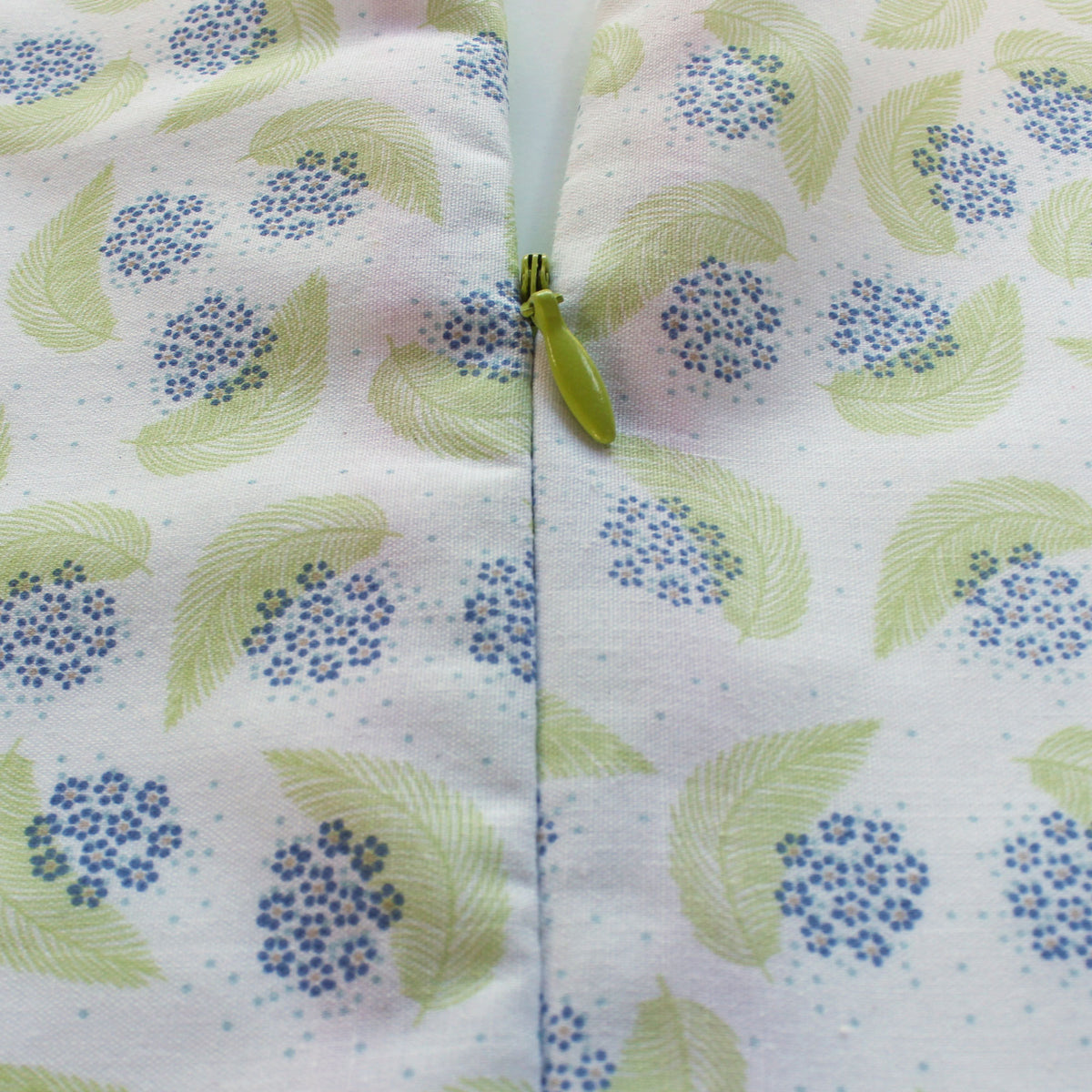Lola Sewalong: Taking Measurements and Choosing a Size
In this post, we'll take measurements and determine our size for this pattern. We'll decide if adjustments, such as a bust adjustment, grading between sizes, or a length adjustment is necessary. In the following post of this sewalong series, we will discuss how to make these pattern adjustments. For now, let's find our size.
UPDATE: We released a version of the Lola pattern in our extended size range. The pattern can be found here.
Taking your measurements:
- Wear a well-fitting bra while taking measurements.
- Measure so that the tape is snug and make sure your fingers are not underneath the tape.
Body Measurements:

1 & 2: Bust Size (High Bust and Full Bust):
In determining your bust size, we'll take two measurements:
1: Full bust
2: High bust.
1: How to measure high bust:
Wrap the measuring tape around you, placing the tape underneath the shoulder blades, as high as possible under your arms, and above the fullest part of the bust in the front.
2: How to measure full bust:
Wrap the measuring tape around you, measuring around the fullest part of the bust.
Determine if a bust adjustment is needed:
If the difference between these two measurements is 2", you'll base your "Bust Size" on your full bust measurement.
Example: If your full bust measurement is 37" and your high bust measurement is 35", your "Bust Size" is 8.
If the difference between these two measurements is less than 2", you will need a small bust adjustment. You will select your bust size based on your "High Bust" measurement, and make a full bust adjustment to accommodate the "Full Bust" size.
Example: If your full bust measurement is 34" and your high bust measurement is 35", you will select your "Bust Size" will be 4, and do a SBA (small bust adjustment).
If the difference between these two measurements is more than 2", you will need a full bust adjustment. You will select your bust size based on your "High Bust" measurement, and make a small bust adjustment to accommodate your "Full Bust" size.
Example: If your full bust measurement is 38 1/2" and your high bust measurement is 35 1/2", you will select your "Bust Size" will be 6, and do an FBA (full bust adjustment).
Why is the bust size selected like this?:
The 0-16 pattern is drafter for a B-cup and the 14-30 pattern is drafted for a D-cup. If your high bust/full bust difference is less than or greater than 2", we will need to adjust the pattern's cup size. If you choose the bust measurement based on the "full bust," the garment could be too big or too small in the area of the neckline and shoulder. We will focus on choosing the right fit got that area and adjusting for the cup size.
 Measuring High Bust
Measuring High Bust

Measuring Full Bust
Let's continue to find our measurements.
3. Waist: Measure at natural waistline. Select your "Waist size" based on this measurement.
4. Hips: Measure around the fullest part of the hips. Select your "Waist size" based on this measurement.
5. Back Length: Measure along centre-back, from the base of the neck to the natural waist.
6. Height/Garment Length: Take note of your height, and determine where the garment length for your size falls on you. Refer to the Garment Length on the finished garment measurement chart.
Selecting your size:
Select your size based on your bust, waist, and hip measurements. Circle your measurements on the size chart. You may be one size throughout the chart for each of these measurements, or you may have measurements that fall between two or three sizes. In this case, we'll make a pattern adjustment that grades between sizes.
Garment length adjustments:
You may choose to make a length adjustment so that the style is more complementary to your height. There are two types of length adjustments that you can make:
1. Back Length Adjustment
Making an adjustment here will shorten where the waistline of the garment sits (and also affects overall length).
To determine if a Back Length adjustment is necessary, calculate the difference between your back length and the pattern's back length for your selected size.
Example A:
Personal back length =14"
Back length for selected size = 15"
Difference of -1"
Required adjustment: Shorten the upper body of dress by 1"
Example B:
Personal back length =16"
Back length for selected size = 15"
Difference of +1"
Required adjustment: Lengthen the upper body of dress by 1"
2: Garment Length Adjustment
Making an adjustment here will change where the hemline sits.
A Garment length adjustment is mostly a matter of taste in where you want the hemline to sit. Consider that Lola is made for a height range of 5'6" - 5'9". You've measured where the hemline falls on you. Now you can decide if you want to shorten or lengthen the garment.
A note on shortening:
For this style, it is easy to shorten the pattern length during garment construction. For example, before the hem ribbing bad is attached, you can determine if shortening is needed. It's better to have more length than cut it too short!
Summary:
So now that you have selected your size, and you know which pattern adjustments are required for the best fit, we can move on to pattern adjustments.
In Monday's post, I'll discuss how to grade between sizes and how to lengthen and shorten based on back length or overall length. We'll be talking bust adjustments on Wednesday, Nov 20th.
See you on Monday!
YOU MAY ALSO LIKE:
Leave a comment
Comments will be approved before showing up.
Also in The Victory Patterns Blog

Pair the Sofia Bell Sleeve Strap with any sleeve option

How to sew a centered zipper
A centered zipper is one of the most usefull zippers to be able to sew. They are commonly used in skirts, dresses, and pants, as well as cushion covers and handbags. In this tutorial, we'll show you how to sew a centered zipper using directional sewing, which avoids the fabric from shifting in different directions once the zipper is sewn in.



